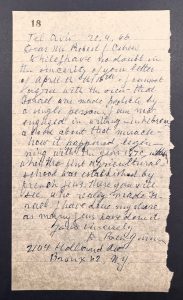Montreal’s Expo 67 was held to celebrate Canada’s centennial year. It opened on April 29, 1967, and featured two Jewish-themed pavilions: one for the State of Israel which was presented by the country, and the Pavilion of Judaism which was conceived, funded and hosted by Montreal’s Jewish community.
Israel’s pavilion told fairgoers a Zionist story about building a modern democratic country in the Jewish people’s ancestral homeland. Immediately upon entering, visitors were led through a corridor to one of the Dead Sea Scrolls which declared a tangible link of the Jewish people to the land. The pavilion made the point that Israel was holy to three world religions.
Feeling uneasy that there would also be two Christian-themed pavilions at Expo 67, fair organizers approached the Canadian Jewish Congress to secure a Jewish presence at the fair. In parallel, Rabbi William Shuchat of Montreal’s Shaar Hashomayim Synagogue reached the same conclusion and wanted the fair to include a small functioning synagogue.
The Israel pavilion did not wish to host the synagogue given it was stressing the country’s centrality to three religions (and wanting to promote tourism by all). Rabbi Shuchat approached Sam Steinberg of the grocery store that bore his name to lead the fundraising for the project. Steinberg agreed on the condition that the initiative be broader than a synagogue and include exhibits that explain the meaning of Judaism to the world. This became the Pavilion of Judaism and this is its illustrated souvenir book (which could be purchased for $1 plus 25 cents for postage).
The pavilion’s synagogue was supported by all religious streams of Montreal’s Jewish community and offered seating for about 25. Daily prayers were officiated on a rotating basis by rabbis from different synagogues who agreed to ensure a minyan was present on their designated day, although usually that was not an issue as the number of attendees filled the room and spilled into the adjacent courtyard.
The Six-Day War started and ended during the run of the fair, and the two Jewish-themed pavilions became a site of Jewish pilgrimage and celebration.
If a world’s fair were to take place in Canada today, would there be an Israel pavilion? Would the host city’s Jewish community mount a pavilion of Judaism? If it did, would all religious streams work together and take turns running services? It makes me sad to think that the answer to at least two and likely all three of these questions is no.







